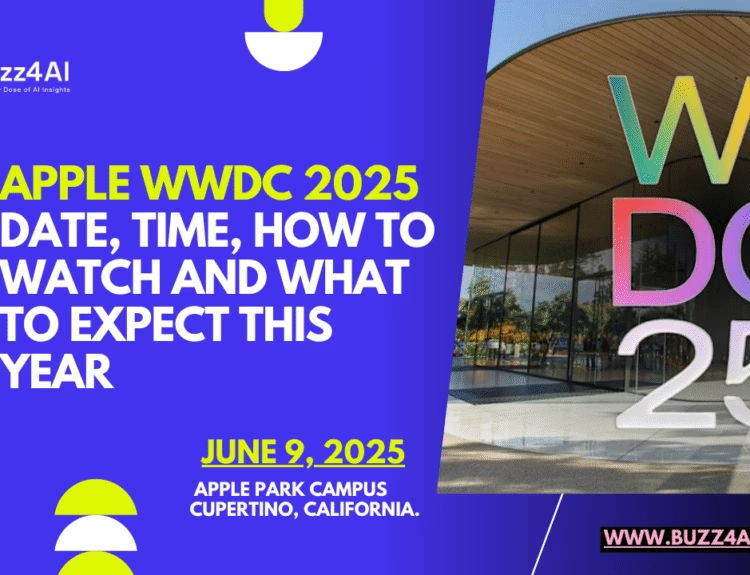GPT-4.1, OpenAI has officially launched its latest and most sophisticated language model.This release marks a significant advancement in AI capabilities, offering enhanced performance, expanded context understanding, and improved safety features. GPT-4.1 is now accessible to ChatGPT Plus, Pro, and Team subscribers, while Enterprise and Education users will gain access in the coming weeks.
The GPT-4.1 models should help software engineers who are using ChatGPT to write or debug code, OpenAI spokesperson Shaokyi Amdo told. GPT-4.1 excels at coding and instruction following compared to GPT-4o, according to OpenAI, but is faster than its o-series of reasoning models.
What’s New in GPT-4.1?
GPT-4.1 introduces several notable enhancements over its predecessors. One of the most significant upgrades is the expanded context window, now supporting up to 1 million tokens. This allows the model to process and understand much larger inputs, making it ideal for complex tasks such as analyzing extensive documents or codebases.
Additionally, GPT-4.1 exhibits improved performance in coding and instruction-following tasks, surpassing previous models in these areas. The model’s ability to handle intricate instructions and generate accurate code makes it a valuable tool for developers and researchers alike.
OpenAI launches Codex software engineering AI agent on ChatGPT : What is it and how does it work?
Who Can Use It?
Access to GPT-4.1 is currently available to ChatGPT Plus, Pro, and Team subscribers through the model picker. Enterprise and Education users are expected to receive access in the near future. Meanwhile, GPT-4.1 Mini has replaced GPT-4o Mini as the default model for all ChatGPT users, including those on the free tier.
GPT-4.1 is also available through the API for developers and companies, with OpenAI positioning it as a more cost-efficient and powerful alternative to previous generations. The new pricing includes significant reductions: GPT-4.1 input costs start at $2 per million tokens, and the nano version is available from just $0.10 per million tokens. Prompt caching discounts have also been increased to 75 per cent to make repeated queries more affordable.
The launch of GPT-4.1 comes as OpenAI has started phasing out earlier models. GPT-4.5 Preview, a research-focused release, was deprecated in the API on April 14, 2025. GPT-4, the model that powered ChatGPT Plus since March 2023, has already been discontinued. While GPT-4.1 isn’t replacing GPT-4o inside ChatGPT, many of its capabilities are being folded into the GPT-4o experience.
GPT-4.1 Limits
While GPT-4.1 offers significant advancements, it does have certain limitations. The model’s extensive capabilities come with increased computational requirements, which may impact response times for some users. Additionally, despite improvements, GPT-4.1 is not immune to generating incorrect or nonsensical answers, commonly referred to as “hallucinations.” OpenAI continues to work on mitigating these issues to enhance the model’s reliability.
Context, Speed, and Model Access
The expanded context window in GPT-4.1 allows for more comprehensive understanding and generation of content. This is particularly beneficial for tasks that involve long-form content or require the model to maintain coherence over extended passages. In terms of speed, GPT-4.1 delivers faster response times compared to its predecessors, enhancing user experience. Access to the model is streamlined through the ChatGPT interface, making it readily available to eligible users.
 Image Source : OpenAI
Image Source : OpenAI
Instruction following means how well the AI follows instructions. For example, my Yorkie-Poo pup has an instruction-following rating of something under 1% (unless there’s a treat in evidence). GPT-4.1 scored a 38.3% rating — which, at less than half the time, isn’t that much more than my dog. That’s something to keep in mind when relying on an AI.
Contextualizing GPT-4.1 Against Predecessors
Compared to previous models like GPT-4 and GPT-4o, GPT-4.1 demonstrates significant improvements in several areas. Its expanded context window, enhanced coding capabilities, and faster response times set it apart from earlier iterations. These advancements position GPT-4.1 as a leading model in OpenAI’s lineup, offering users a more powerful and efficient AI tool.
By contrast, GPT-4.1 is intended as a faster, more focused alternative. While it lacks GPT-4.5’s breadth of knowledge and extensive emotional modeling, it is better tuned for practical coding assistance and adheres more reliably to user instructions.
An Enterprise-Focused Model
GPT-4.1 is designed with enterprise applications in mind, offering features that cater to business needs. The model’s enhanced coding abilities and expanded context window make it suitable for tasks such as code generation, data analysis, and drafting complex documents. OpenAI aims to provide businesses with a powerful tool to streamline operations and improve productivity.
Evaluations and Safety
OpenAI has implemented rigorous safety evaluations for GPT-4.1 to ensure responsible usage. The model has undergone testing to assess its performance in various scenarios, including its propensity to generate hallucinations. These evaluations help identify areas for improvement and guide the development of safety measures to mitigate potential risks associated with AI-generated content.
Final Thoughts: A New Step Forward
The introduction of GPT-4.1 marks a pivotal moment in the evolution of AI language models. Its enhanced capabilities and enterprise-focused features open new possibilities for users across various sectors.
While challenges remain, particularly concerning safety and reliability, GPT-4.1 represents a significant step forward in delivering advanced AI solutions to a broader audience.
For more posts visit buzz4ai.in








[…] pointed out that Perplexity Labs is a response to tools and models such as OpenAI (launched in March), Claude Opus 4 (released in May), and Google’s recent Flow and Firebase […]
[…] math, coding, and logical reasoning, the new model directly challenges leading AI systems like OpenAI’s ChatGPT o3 and Google’s Gemini 2.5 Pro. This update isn’t just a marginal improvement; it brings […]
[…] Sora was initially accessible through OpenAI’s ChatGPT Plus subscription, Microsoft’s integration into Bing offers a free […]
[…] has launched M1, a cutting-edge reasoning model that is being hailed as a serious challenger to OpenAI’s GPT-4—but at only 0.5% of the […]
[…] into AI Mode isn’t just about staying ahead—it’s also a defensive strategy. With players like OpenAI (ChatGPT), Anthropic (Claude), and Perplexity AI moving into the search space, Google’s strategic […]